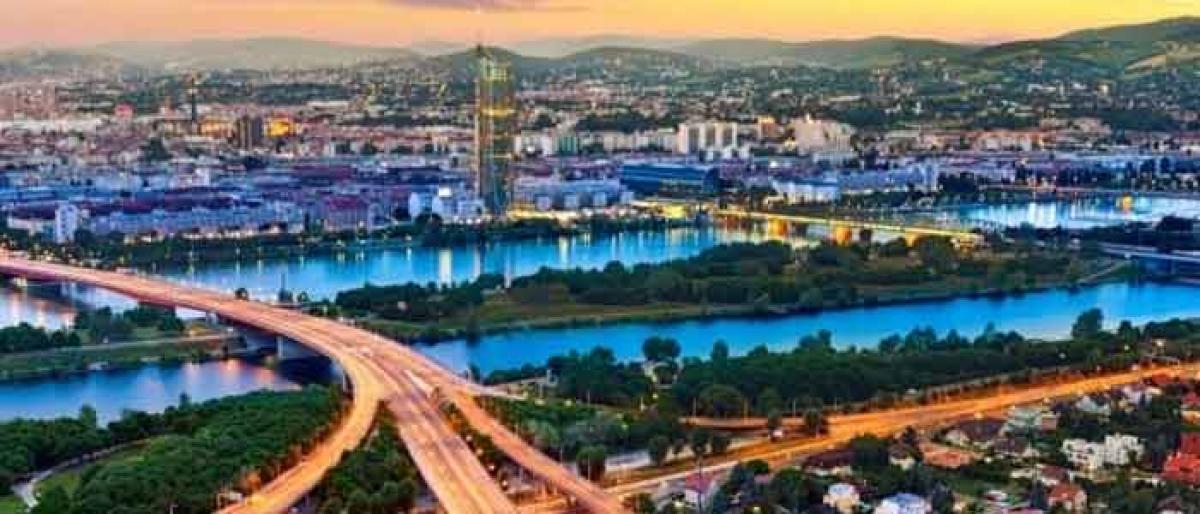Live
- Search intensified for Gowtham Reddy as HC dismisses his bail plea
- Santosh Trophy final round to begin in Hyderabad tomorrow
- BGT: Rohit must return to opening for Brisbane Test, says Ponting
- Swimming sensation Havya steals the show
- NDTL gets WADA nod to manage Athlete Biological Passport
- BWF World Tour Finals: Treesa-Gayatri wins 2nd match to keep semis hopes alive
- Youngest ever to conquer chess world
- Jamie Lever to star in Lakshmi R Iyer’s ‘2050’: It challenged me emotionally
- Prateeksha Srivastava says she seldom meets fellow music composers Rusha, Blizza, in person
- Bridal fitness tips by Yasmin Karachiwala
Just In

It can be done but it requires hard work and an understanding of how to prevent disasters and avoid planning mistakes which will only bring misery in the future.
Do you want to make your city the most livable place in the world, or as good as?
It can be done but it requires hard work and an understanding of how to prevent disasters and avoid planning mistakes which will only bring misery in the future.
If we are to leave no one behind in the race for sustainable development, we need to get ready for an uncertain future as the numbers of people living in urban centres surge towards 6.4 billion by 2050 when climate change is likely to have an even more significant impact on urban life.
Over the last twenty years, extreme weather events have doubled and now account for 90% of all major recorded disasters. Earthquakes and tsunamis kill more people but extreme weather events displace over 20 million people each year. Disasters cost the global economy over $500 billion and push 26 million people into poverty every year.
No country, city or town will be spared the impacts of climate change and there are some fundamentals to be aware of when you consider how well your town or city is doing when it comes to managing disaster risk. As the World Urban Forum opens in Kuala Lumpur, Malaysia, this week here are five things to think about:
Access to a good early warning system
We need to reduce the likelihood of people dying in urban disasters by ensuring that basic early warning systems are in place and that these warnings reach people, and are understood and acted on. People need to have a safe place to go until the storm passes or the flood eases.
No one should be living in harm’s way
We need to reduce the numbers of people affected by disasters by ensuring that land use regulations and building codes are implemented. This helps to ensure that people live, work and study in safe areas and in buildings constructed to the standards required by the risk profile of the location. If the risk is too high, don’t build.
Don’t throw good money after bad
The most expensive school, hospital, road, public utility …is the one that has to be re-built after it has collapsed in a storm or an earthquake. Building back better is an opportunity but building better in the first place avoids unnecessary reconstruction costs that take resources away from areas such as education and health which would benefit society as a whole. Make sure the private sector and government agencies do not embark on critical infrastructure projects without factoring in present and future disaster risk.
Don’t leave anyone behind
Everyone needs to be involved in preparing for a disaster, whether it’s having an emergency kit ready, knowing an evacuation route or looking out for a vulnerable neighbor. Preparedness and response planning must include women and girls, youth, people living with disabilities and older persons. People who may be vulnerable often have an acute understanding of disaster risk and how to manage it. When developing strategies for disaster risk management, involve the whole community. This is essential to building resilience.
Invest today for a safer tomorrow
Often an investment in disaster risk reduction requires little effort but a big insight. For example, leaving mangrove forests or coastal wetlands in place, ensures greater protection against floods and storms. Leaving the car at home reduces your carbon footprint. When it comes to major investments in reducing disaster risk, the benefit to cost ratio can be as high as 15:1 in terms of avoided economic losses and reconstruction costs.
The world itself is turning into an urban forum, building resilience to disasters not only saves lives but improves them.
By: Robert Glasser
(Glasser is the UN Secretary-General’s Special Representative for Disaster Risk Reduction and the head of the UN Office for Disaster Risk Reduction www.unisdr.org)

© 2024 Hyderabad Media House Limited/The Hans India. All rights reserved. Powered by hocalwire.com







